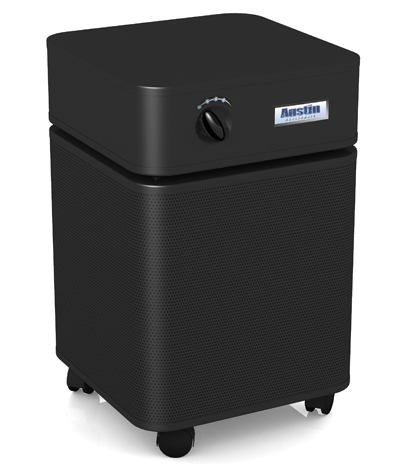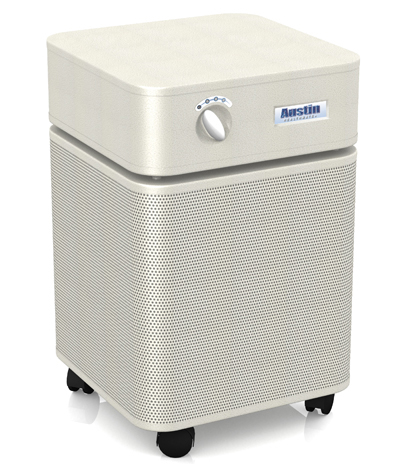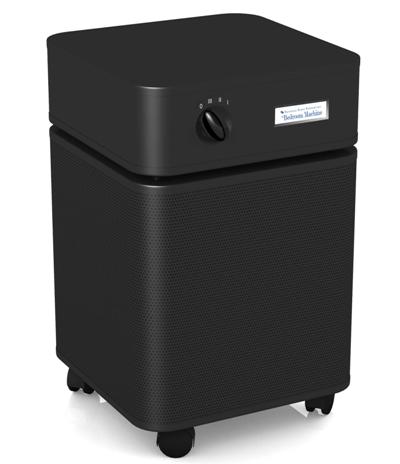Air Cleaner FAQ
Clean air is here!™
HEPA (High Efficiency Particulate Arresting) filter media was developed by the US Atomic Energy Commission to filter out sub-micron particles. A True medical grade HEPA is laser-tested and must remove a minimum of 99.97% of all particulate matter greater than 0.3 microns in size (about 3000 times smaller than a human hair!).
According to more recent NASA research, HEPA media filters nanoparticles (0.015 micron). Viral particles, also known as virions, are 0.05 to 0.1 micron. Virions are larger than the nanoparticles tested by NASA. This suggests that HEPA media is capable of filtering aerosols containing viral particles, such as a Coronavirus.
This polypropylene material was designed to remove microscopic particles from the air including microorganisms found in aerosols (bacteria, viruses.) HEPA filters are widely used by hospitals, clean rooms and for the abatement of lead and radioactive particles.
Be wary of terms with hyped up names. True medical grade HEPA means you are getting the highest standard of filtration, period. Also, be wary of products that don’t reveal the square footage of the HEPA they use in their filters, as it may only be the size of a handkerchief.
Austin Air uses the highest quality of activated carbon made from coconut husks. Activation is a process that increases the surface area of the carbon. The process of activation creates micro pores that increase the porosity of the charcoal. I gram of activated charcoal carbon has the same surface area as a football field.
When toxic chemicals, particles or aerosols (including COVID-19) come in contact with our activated carbon, the intermolecular forces draw the airborne toxins into the millions of pores and pockets on the surface of activated carbon. Like a sponge, the activated charcoal carbon adsorbs the toxic material.
Zeolites are commercial adsorbents. Zeolite is a natural mineral that has the distinct capability of adsorbing certain gas molecules. Zeolite is particularly effective in adsorbing formaldehyde, ammonia and carbon monoxide. Austin Air mixes in ten percent zeolite to the activated charcoal to increase the carbons effectiveness in removing volatile organic chemicals from the air. Mined in Truth Or Consequences, New Mexico.
Carbon and zeolite are used to remove over 3000 gases, odors and chemicals from the air. Both carbon and zeolite have special properties that allow them to adsorb chemicals and gaseous materials. The approximate ratio of carbon to zeolite in the HealthMate, HealthMate Plus and Bedroom Machine is 10:1.
Potassium iodide is a chemisorber that is added to the activated carbon mix in the HealthMate Plus. Chemisorbers break down large molecules into smaller molecules so they can be easily adsorbed by the activated carbon. (Dental practices routinely use a wide range of chemical products: sterilants and disinfectants, including glutaraldehyde; glutaraldehyde with phenol; hydrogen peroxide; hydrogen peroxide with peracetic acid; ortho-phthalalhyde (OPA); alcohols (ethyl, isopropyl); quaternary ammonium chloride as well as oxidizers (bleach); formaldehyde and phenolics.) Additionally, when an amalgam filling is removed, mercury can become an aerosol.
The potassium iodide in the HealthMate Plus improves the carbon’s ability to adsorb the toxic chemicals from the air.
HEGA is unique to Austin Air and stands for High Efficiency Gas Absorption. HEGA is a special woven activated carbon cloth for gas and odor adsorption. This activated carbon cloth was originally developed by the British Military to protect against chemicals, gases and biological threats, including viruses and bacteria. Austin Air’s Bedroom Machine includes two activated carbon filters – a Carbon & Zeolite layer and a HEGA layer. Austin Air’s Allergy Machine features one activated carbon filter – HEGA.
The HEGA filter not only adsorbs chemicals and gases, it captures microbes and is both anti-microbial and virucidal.
Units that feature UV, ionization and plasma technology produce ozone, a known lung irritant that has been shown to increase the incidence of allergies and asthma, according to the American Lung Association. Additionally, the EPA questions both the safety and effectiveness of products which produce ozone. These units can not be sold in the state of California as they are considered hazardous to your health. https://www.epa.gov/indoor-air-quality-iaq/ozone-generators-are-sold-air-cleaners
- Perma Filter Pre – Filter `– Large Particle Filter
- Medium Particle Filter
- True Medical Grade HEPA filters nanoparticles including bacteria and virus
- Activated Charcoal/Carbon with Zeolite – adsorbs chemicals, gases and odors. The HealthMate Plus adds potassium iodide, a chemisorber to this Carbon/Zeolite mix.
- HEGA – The Bedroom Machine has a second carbon layer made of carbon cloth. HEGA stands for High Efficiency Gas Adsorbing and was developed by the british military.
No, Austin’s Air cleaners do not produce ozone, ions, or negative ions. Ozone is a known lung irritant and can aggravate respiratory problems such as asthma, emphysema and bronchitis. Additionally, Austin Air’s products are made of steel and have a powder coat paint, which is baked on, so the products do not give off gas.
To calculate the true cost of an air cleaner (purchase price + replacement filter costs + energy costs = total cost). Austin Air offers the highest quality machine, with a filter life of 5 years and low energy consumption. Other machines require as many as 20 filter changes over a 5 year period and have higher energy consumption.
It is both the quantity and quality of carbon / zeolite and True Medical HEPA medium that establish the life of the filter. Austin Air uses the best quality of materials in generous proportions to create these filters. The Perma Filter pre-filter catches the large particles and saves the HEPA and carbon filters for capturing microscopic particles and volatile chemicals.
Yes, all Austin Air filter housings are designed to meet the same specifications. That means you can change filter types without a problem. Any Austin Air Standard size machine made after 1995 will accept any of the stand sized replacement filters.
Many inexpensive products rely on technologies that produce ozone, provide only a small amount of filter media and require replacement filters at least annually, which adds to life-cost of the product.
The Austin Air machine has a 5-year parts and labor warranty and a 5 -year prorated warranty on the filter assembly.
If a product is damaged in shipping, the unit is replaced immediately by Austin Air. I have sold thousands of units over the last 17 years and had less than a handful of customers who have had problems with the units. In the rare event that a unit has a problem during its 5-year warranty, you would ship it back to Austin Air without the filter – this makes it about half the shipping weight. You would be responsible for the outbound shipping cost and Austin Air takes care of the rest, including repairs or replacement if needed.


